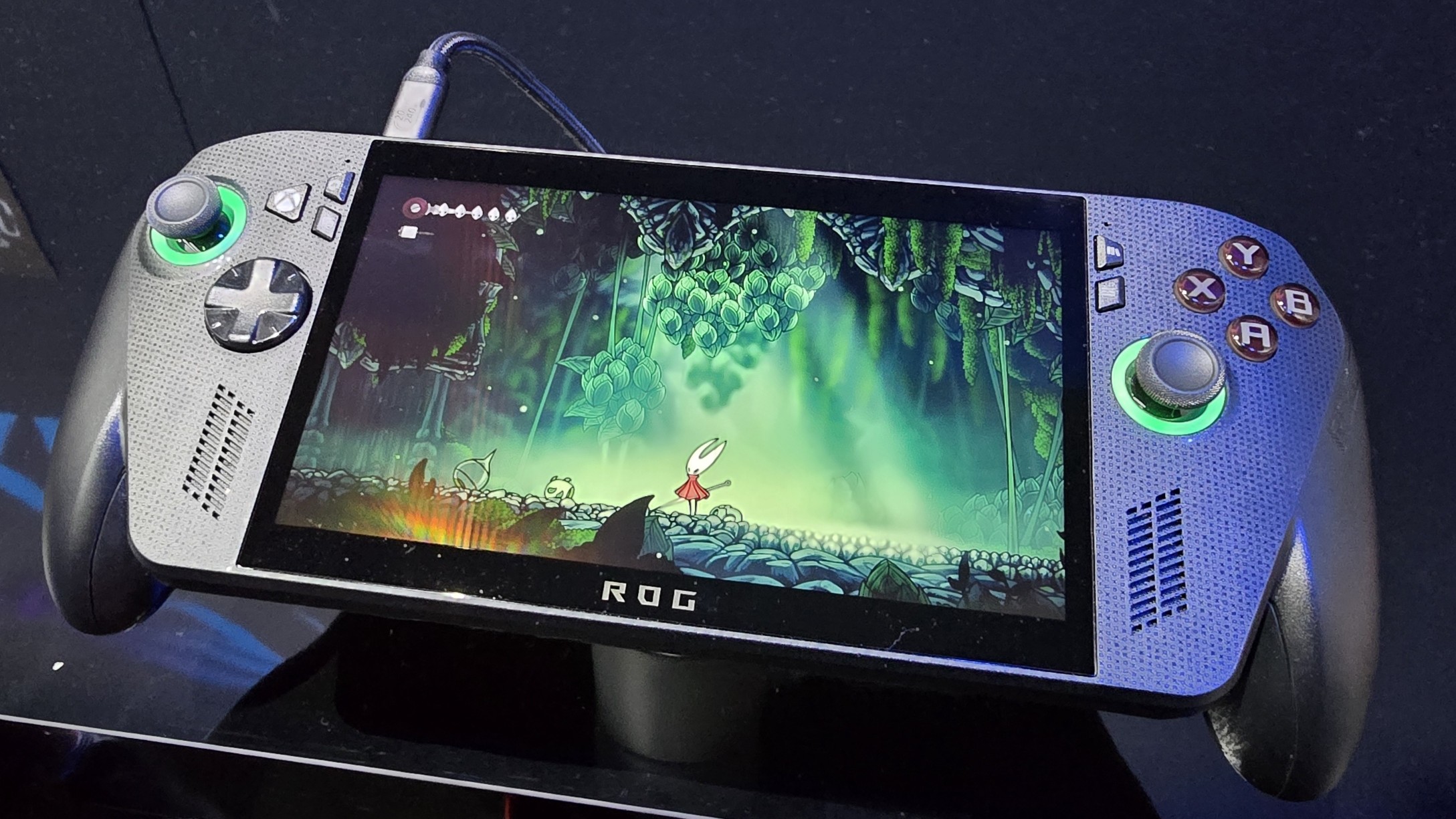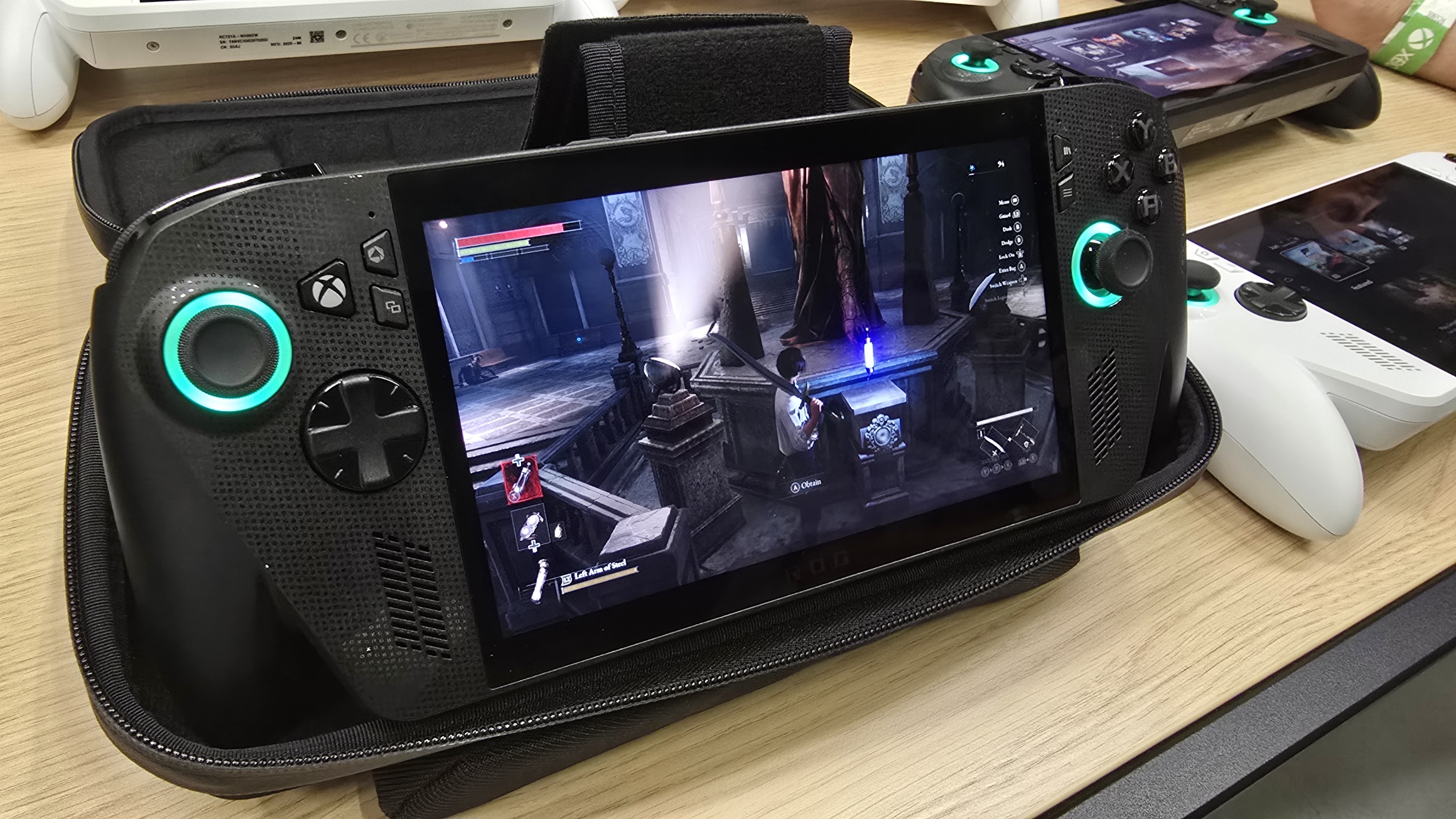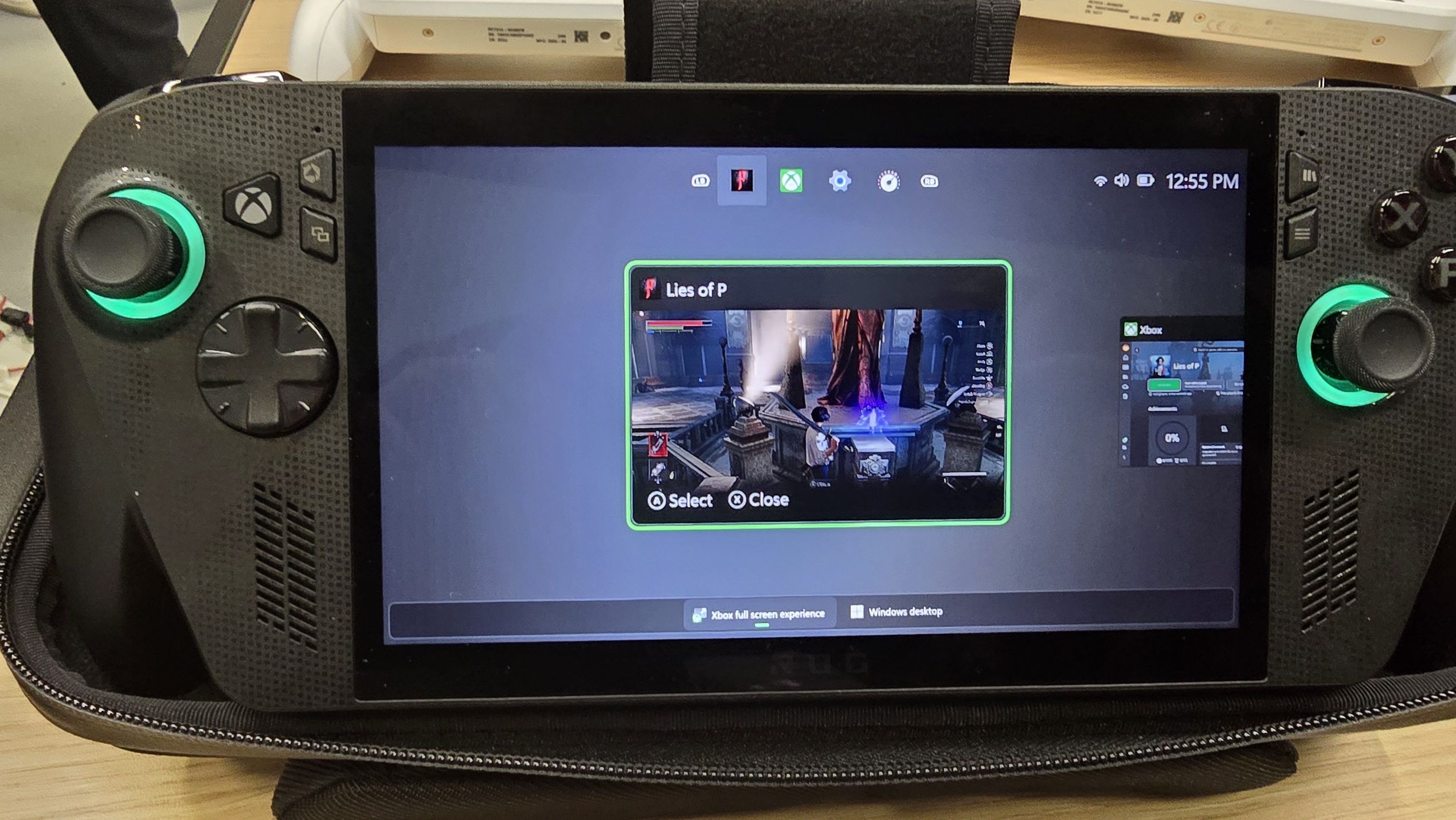Hands-on with the Xbox Ally and Xbox Ally X — possibly the best gaming handheld ever, still has some big questions to answer
We finally got to try the Xbox Ally and Xbox Ally X at Gamescom, but with no mention of price, battery life, and user confusion over compatibility — there are still some big unanswered questions left.

Gamescom 2025 has been and gone, and Microsoft was out in Cologne in force to showcase the first piece of its next-gen hardware puzzle.
The Xbox Ally was revealed a few months ago, following an exclusive report from us on a device Microsoft had codenamed Kennan. The PC gaming handheld has been built in partnership with ASUS, and the hardware has been finished for a fairly long time at this point. What has held it up has been the software side.
Microsoft and its teams at Windows and Xbox have been working flat out to polish new features that will make devices like this feel more "native." Previous Windows-based handhelds like the ASUS ROG Ally and Lenovo Legion Go were often criticized not necessarily for their hardware, but because Windows 11 itself simply didn't handle well on devices like this.
Lenovo tried to solve the input disparity with a dedicated mouse trackpad, with most manufacturers settling for clunky touch controls. However, with the Xbox Ally, Microsoft has enabled many pieces of the Windows experience to be interactive with joysticks and traditional Xbox ABXY buttons, enabling a far more intuitive experience. But is it enough?
We went hands-on with the Xbox Ally across multiple sessions during Gamescom last week, and there are still some big unanswered questions ahead of the device's launch, slated for October 16, 2025.
Sublime hardware, ergonomics, and (seemingly) performance

As someone who has used a ton of these types of devices, I found myself gravitating away from the superior UX on the Steam Deck in favor of the uncompromised power of the Z1E options, namely the Legion Go and ASUS ROG Ally. Losing out on some usability efficacy was worth it to gain raw power and full-bore compatibility, at least for me, but with the Xbox Ally / X, it looks like the usability gap is closing, too.
The Xbox Ally ultimately represents the first step into a wider handheld world for Microsoft, as its next-gen plans for Xbox continue to line up.
The first thing I noticed immediately was the ergonomics on the Xbox Ally. Developed in partnership between Microsoft and ASUS, this is a device that prioritizes how it feels to handle, rather than how it looks. The handles look incredibly strange in photographs, potentially, but they make it far superior to hold and use over long periods of time, beating out even the Steam Deck or Nintendo Switch in my view. This is as close to an Xbox controller as one can get in a device like this, and it proves that Microsoft has best-in-class design when it comes to ergonomics.
All the latest news, reviews, and guides for Windows and Xbox diehards.
It's not just about holding the device either. Even things as basic as lifting the device off a desk feels easier with the Xbox Ally, as it has some natural grooves and curvature to help you easily get a hand on it. The back buttons are also placed more thoughtfully into the device, preventing accidental activations — something my Lenovo Legion Go gives me headaches for.
The first thing I noticed immediately was the ergonomics on the Xbox Ally ... this is as close to an Xbox controller as one can get in a device like this.
Microsoft and ASUS repositioned the bumpers, triggers, and joysticks to accommodate a more standard "Xbox" feel, and for any Xbox controller user, it makes the experience that much more pleasant. All of your muscle memory is welcome here.
The design of the Xbox Ally could be a bit more congruent visually, though. Most of it is designed with function in mind, rather than form, and that's probably what is ideal in a device like this. The bezels are uneven and oddly chunky, and the mis-match of Xbox and ASUS iconography and fonts are a bit strange.

It's an Xbox device, but it's also a ROG device. It's a quirky and perhaps somewhat unlikely collab, but it's easy to overlook stylistic choices when the feel has been nailed so thoroughly. At the end of the day, you're not looking at the bezels, you're looking at the game being played, and ASUS and Microsoft delivered here.
Indeed, there's still a lot we don't know about this device, despite how close we are to launch day. Microsoft isn't giving us the price yet, as ASUS and Xbox mull near-weekly changes to the U.S. global tariffs situation.
The display is angled slightly against the handles, which again gives it a more natural fit in the hand. The weight distribution is also very impressive, following trends set by the Xbox Ally's ROG predecessors. It feels a lot lighter than it should on paper, and the sticks, triggers, buttons, and bumpers feel like they hit that "Xbox" quality bar, at least in these demo units.
With feel thoroughly nailed, it rests on game performance to complete the package, and I'm happy to report that the Xbox Ally X and even the Xbox Ally "S" seem to deliver in a big way here.

I played many "AAA" modern games on this thing, including Lies of P, Gears of War: Reloaded, and Hogwarts Legacy. On the more powerful Xbox Ally X, Gears of War ran at a smooth 60 FPS, while Lies of P seemed to hit around 40-50 in "Balanced" AMD FidelityFX modes. Hogwarts Legacy managed around 30 FPS on the demo unit, although I didn't get a ton of time to tweak the settings therein. On the regular white Xbox Ally "S," Forza Horizon 5 managed a buttery smooth solid 60 throughout — which I found to be very impressive, although it is a very optimized game.
The Xbox Ally sports a 7" IPS 1080p display, with a 120 Hz refresh rate complimented by AMD FreeSync. The VRR aspect of it is crucial in a device like this I would say, given that occasional performance hiccups can drop frames, although I didn't notice much of that during my sessions. Full performance reviews won't come until we have the device in hand for more thorough testing, but early impressions here are extremely positive. I'm excited to see how much I can push this thing in the future, given my knowledge of how far the Z1E can go.
Will that performance come at a cost, though?
The elephant(s) in the room

The Xbox Ally's headline act, arguably, is the new Windows 11 features. With the Xbox Ally, you will be able to set the Xbox app as a "full screen" experience, effectively taking over the operation of Windows to give the system some gaming-first functionality. The Windows 11 Desktop and other features get offline in this mode, freeing up RAM and other system resources to focus on gaming performance.
With a long press of the Xbox button, you can also open up the new task switcher pictured above, allowing you to move between apps like Discord, your Xbox library, and the games themselves, without having to exit into the Desktop environment. You can easily select the Desktop from this menu as well if you fancy, giving you access to full-fat Windows for installing things like Steam, mods, and tweaking system settings more deeply.
With feel thoroughly nailed, it rests on game performance to complete the package, and I'm happy to report that the Xbox Ally X and even the Xbox Ally "S" seem to deliver in a big way here.
However, I was able to crash this experience quite easily during my testing sessions. Task switching would also hang occasionally and hit other hiccups. Microsoft says that the development of these features is an ongoing process, and I'm sure this was an older build, but you have to wonder how polished it'll all be for launch day — which is getting close, set for October 16, 2025.
Indeed, there's still a lot we don't know about this device, despite how close we are to launch day. Microsoft isn't giving us the price yet, as ASUS and Xbox mull near-weekly changes to the U.S. global tariffs situation. Microsoft also wouldn't tell us battery life estimations either, citing software readiness.
With a long press of the Xbox button, you can also open up the new task switcher ... however, I was able to crash this experience quite easily during my testing sessions.
The AMD Z2E chips are supposedly more efficient than their predecessors. But at 30w, the previous ASUS ROG Ally could barely manage an hour of playtime in a 3D AAA game. But that's part of the beauty of these devices. You can heavily tweak the wattage and play low-intensity 2D titles for scenarios where you don't have access to a power outlet. I've easily got my Lenovo Legion Go to 3 hours of playtime while being conservative with the power draw, but it would still be nice to know what Microsoft is expecting to give us with the Xbox Ally.
The Xbox Ally prices have also leaked via ASUS themselves previously, hitting around $899 and $599 for the X and "S" respectively, depending on tariffs. After seeing Forza Horizon 5 running so well on the Xbox Ally "S," I'm impressed by how much of a great deal that device is going to be at $599, making it likely far more powerful and versatile than the older Steam Deck or the more recent Nintendo Switch 2. Will the boosted performance and battery life be enough to justify $899 on the higher end though? There's still a lot of questions to answer before we get to October 16.
An incredibly promising piece of kit

For all my reticence over price and performance testing, I can't stop thinking about how pleasant it was to use the Xbox Ally. Yes, it had some glitches, but the task switcher and other Windows 11 enhancements were a glimpse at game-changing usability enhancements that these devices absolutely need.
The way the Xbox Ally feels to hold, lift, and simply use is far beyond any other OEM PC gaming device I've used so far, save for potentially the Steam Deck itself. The double USB-C ports, Windows Hello fingerprint reader, and monster Z2E chipset also make the Xbox Ally a potential travel laptop replacement, too, for crazy people like myself.
I'm sure this was an older build, but you have to wonder how polished it'll all be for launch day — which is getting close, set for October 16, 2025.
Indeed, you need to remember that the Xbox Ally is ultimately a PC. This means that Xbox console games will not run on this device. The games need to be Xbox Play Anywhere certified to run on both Xbox and PC, and on devices like the Xbox Ally. The good news is there is well over a thousand Xbox Play Anywhere titles now, and many upcoming games like Silent Hill F and Final Fantasy 7 Intergrade sport the Xbox Play Anywhere moniker.
However, it's true that many, many more don't, and likely never will, as publishers don't want to give away "two" licenses (console and PC) to access their games. As Microsoft continues to push devices like this, it will increasingly cast a shadow over games that don't support Xbox Play Anywhere.
Microsoft will have its work cut out to encourage more developers to support Xbox Play Anywhere to that end, given that the vast majority seem ambivalent right now. Publishers like the idea of you buying games twice, both for console and PC, which is at odds with the platform Microsoft wants to build.
For Xbox games that aren't available on the Xbox Ally, Microsoft will defer to Xbox console remote play and Xbox Cloud Gaming for some titles. The Xbox Ally ultimately represents the first step into a wider handheld world for Microsoft, as its next-gen plans for Xbox continue to line up. But having access to all Xbox games on a handheld remains the Holy Grail, and for now, it looks like Microsoft has side-lined its own first-party Xbox handheld.

Jez Corden is the Executive Editor at Windows Central, focusing primarily on all things Xbox and gaming. Jez is known for breaking exclusive news and analysis as relates to the Microsoft ecosystem while being powered by tea. Follow on Twitter (X) and tune in to the XB2 Podcast, all about, you guessed it, Xbox!
You must confirm your public display name before commenting
Please logout and then login again, you will then be prompted to enter your display name.


